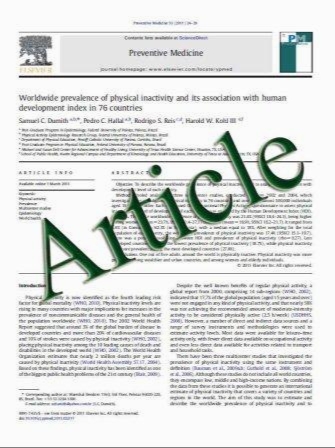An evaluation of the clinical significance of FOXP3+ infiltrating cells in human breast cancer
- نوع فایل : کتاب
- زبان : انگلیسی
- مؤلف : Sahar M. A. Mahmoud Emma C. Paish Desmond G. Powe R. Douglas Macmillan Andrew H. S. Lee Ian O. Ellis Andrew R. Green
- چاپ و سال / کشور: 2010
Description
Studies in mice have shown that thymicderived CD4? CD25? regulatory T cells (T reg; FOXP3? lymphocytes) inhibit an antitumour immune response. Additional studies have also reported that the T reg population increases in peripheral blood and tumour tissues from patients with cancer. However, the relationship between the T reg population and the patient prognosis remains controversial. Our aim was to determine the prognostic value of T reg cell density in breast cancer using immunohistochemical assessment of FOXP3, which has been shown to be the optimal marker for T regs. Tissue microarrays were used, and the density of FOXP3? cells was determined in a series of 1445 cases of well-characterised primary invasive breast carcinoma cases with longterm follow up. FOXP3? cell numbers were counted in tumour nests, in tumour-adjacent stroma, and in distant stroma. The total number of FOXP3? cells significantly correlated with higher tumour grade (rs = 0.37, P\0.001) and ER negativity (Mann–Whitney U test, P\0.001). In addition, FOXP3 infiltration positively correlated with HER2 expression and basal phenotype subclass. On univariate analysis, FOXP3? cells were associated with a worse prognosis (P = 0.012, log rank = 6.36). This association was found for intratumoural FOXP3? and for tumour-adjacent stromal FOXP3?-cells (tumour-cell associated FOXP3, P = 0.001 and log rank 10.35). However, the number of FOXP3? cells was not found to be an independent prognostic factor in multivariate analysis. We therefore conclude that FOXP3? infiltrating cells do not have a dominant role in breast cancer prognosis and suggest that other inflammatory cell subsets may be more critical variables.
Breast Cancer Res Treat (2011) 127:99–108 DOI 10.1007/s10549-010-0987-8 Received: 11 December 2009 / Accepted: 5 June 2010 / Published online: 17 June 2010 Springer Science+Business Media, LLC. 2010


